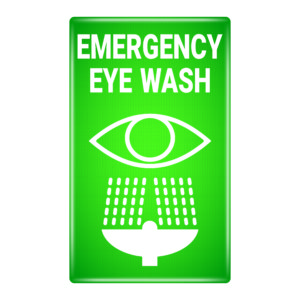Ensuring Compliance for Eyewash and Drench Shower Equipment – Part 1
By: Bonita Tucker
Eyewash and Drench Shower equipment used for the treatment of the eyes, face, and body of a person who has been exposed to hazardous materials and chemical is cover by the ANSI Z358.1-2014 standard which establishes a universal minimum performance and use requirements. The following changes affect their use, you may need to check and update your existing equipment.
The following is an overview of the newest, and most current changes for the ANSI Z358.1-2014 standard released on January 8, 2015:
Section 4.1.5 – “Emergency showers shall be designed, manufactured and installed in such a manner that, once activated, they can be used without requiring the use of the operator’s hands.” (2009 standard did not specify hands-free operations for emergency showers).
Section 4.6.3 – “Self-contained emergency showers shall be visually checked weekly to determine if flushing fluid needs to be changed or supplemented. Such inspection shall be conducted in accordance with manufacturer’s instructions.” (2009 standard did not specify checks were to occur weekly).
Section 5.4.4, 6.4.4 – “Eyewashes and Eye/Face Washes shall “be arranged such that the flushing fluid flow pattern as described in Section 5.1.8 (and 6.1.8) is not less than 33 in. and no greater than 53 in. from the surface on which the user stands and 6 in. minimum from the wall or nearest obstruction.”(2009 standard specified that the “height of the nozzles” be no greater than 45 in. The 2014 standard specifies that the “height of the fluid flow pattern” be no greater than 53. A greater importance has been placed on the height of the flushing fluid stream).
Section 5.5.3 – “Self-contained eyewashes shall be visually checked weekly to determine if flushing fluid needs to be changed or supplemented. Such inspection shall be conducted in accordance with manufacturer’s instructions.” (2009 standard did not specify checks were to occur weekly).
Appendix B5 – “A single step up into an enclosure where the equipment can be accessed is not considered to be an obstruction. Additionally, installers should allow for adequate overhead clearance to accommodate the presence of cabinets over a counter or faucet-mounted emergency eyewash so as not to create an additional hazard that could be encountered when using the device.” (2009 standard did not contain this verbiage).
2009 Updates to ANSI Z358.1-2004 Eyewash Standard
While most of the ANSI Z358.1 standard did not change since the 2004 version, here’s a quick look at two important changes that were made.
- Tepid Water: In previous versions of the ANSI Z358.1 standard, tepid water was mentioned in the Appendix of the standard. Now in the 2009 standard, tepid water requirements have been moved into the Definitions section which clearly defines a tepid water range of 15°-38°C. It is expected that regulators will now be stepping up the enforcement of tepid water requirements, so make sure your facilities are in compliance. Read more about tepid water in the section below.
- Simultaneous Operation: The standard now states that units which combine a Drench Shower and Eye/Eye Face Wash unit must accommodate simultaneous use. Therefore, both the Drench Shower and Eye Wash unit must be fully operable at the same time to properly flush the skin, eyes, and face
Please see “Ensuring Compliance for Eyewash and Drench Shower Equipment Part 2” for more information.
Contact us for assistance with your emergency response needs.
